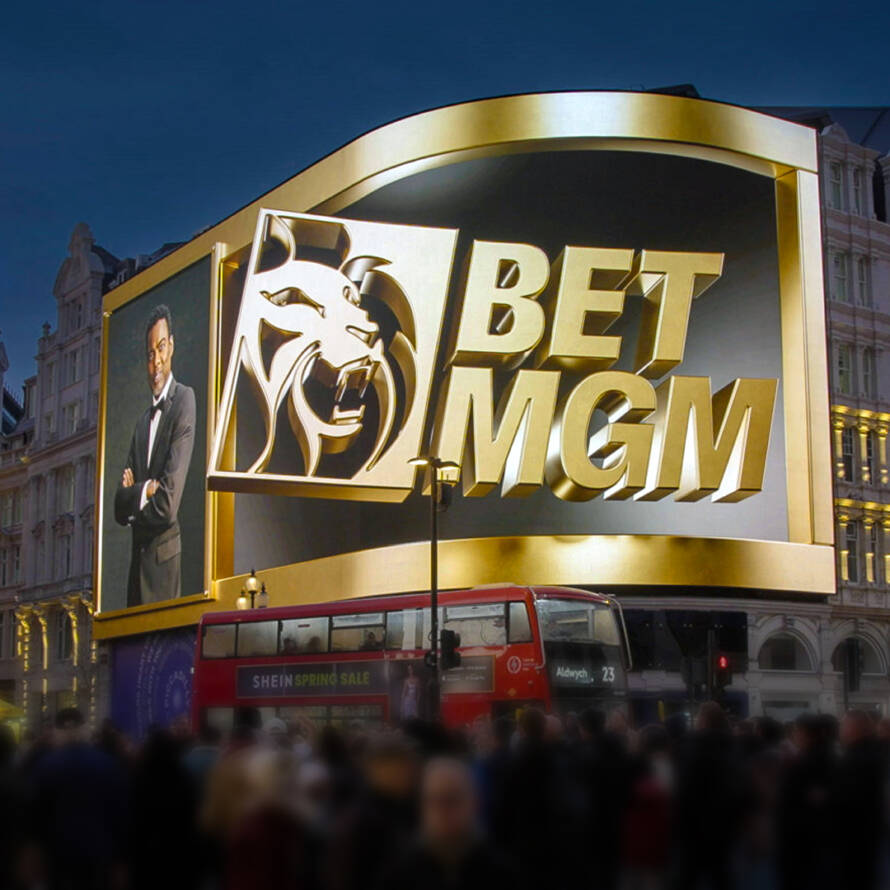Build Brands That Last with Better Creative
In early 2024, Meta rolled out its concept that ‘Creative is the new targeting’. Perhaps an unsurprising position as they seek to wrestle targeting control from advertisers and place it in the hands of their AI powered algorithm.
Whilst this hyperbolic position may simultaneously be both reductive and clunky, having moved through an era in which hyper-targeted media capabilities papered over the cracks of poor creative strategy, it’s about time that creative was put back in the spotlight.
This isn’t to say that creative hasn’t always been of the utmost importance, of course it has, and brands that have done it right have reaped the rewards. However, many brands have fallen into the performance marketing trap of an overreliance of granular targeting, direct response messaging and hyper personalisation, opting for the short-term sugar hit of performance spikes, to the detriment of building any kind of brand equity. Whilst the former certainly has a place in marketing strategy, it shouldn’t be to the detriment of the latter.
But how do brands get it right?
In this piece I will unpack the excellent research by System1 and Effie, covered in their pieces ‘The Creative Dividend’ and ‘The Long and Short (Form) Of It’ to understand three key elements brands should consider within their creative strategy.
Emotion – The single biggest danger is indifference…
Global marketing spend has more than doubled in the past decade but the effectiveness of marketing has reduced by 36% in the past 14 years.
The correlation?
The rise in trackable media, which brings with it an obsession with short-termism.
The outcome?
Advertising has become less emotional. Yet, with consumers now exposed to more ads than ever before (circa 1.2K ads per day!), surely we should be doing all that we can to grab attention?
There’s evidence to suggest that highly emotional ads have a greater impact on both brand & business outcomes, than low emotion ads, with dull ads 27% less effective at driving conversion. So even ads evoking negative emotion have greater impact on both recall and conversion than ads that leave the consumer feeling nothing.
But how do brands get this right?
It’s pretty simple, entertainment.
Orlando Wood cites the notion of Salesmanship vs Showmanship; the former has been on the rise, the latter in decline.
Showmanship is an ad disguised as a piece of entertainment, it’s a value exchange with the consumer, giving them a reason to put down their phone or stop scrolling or stop talking, to look, watch or listen, and give your brand the attention you intended.
Brand Assets
As marketers, we’re guilty of overstating both how much attention consumers pay to our ads and how much time they subsequently spend thinking about our brand. Consumers interactions with brands are fleeting and therefore we must take every opportunity to make it as obvious as possible the message we are trying to convey.
Whilst some Creative Directors may be guilty of using an ad for (insert mundane household good here) as the canvas to express their inner Scorsese, with a mysterious, baffling narrative that leaves the consumer unsure of the product, let alone the brand. The evidence suggests that we need to be less subtle – much less subtle in reinforcing the brand in the consumer’s mind. This doesn’t need to come at the cost of quality and there are plenty examples of brands who do this exceptionally well, but we need to get brand assets in early and frequently – as many as 7 times is deemed optimal.
But what constitutes brand assets and which drive most bang for our metaphorical buck?
Brand assets are visual or audio elements that make brands distinguishable from competitors. They span everything from logos, celebrities, jingles, to characters, slogans and sonic identity (think GoCompare or Checkatrade).
However, not all assets are made equal. Whilst visual cues, particularly brand logos are commonly relied upon, jingles, characters and sonic identity come out on top in ensuring that your brand is recognisable. But we shouldn’t rely on one, it’s the combination of a number of assets, repeated over the course of the ad that fosters recall. In fact, ad recall jumps massively as we approach 7 brand assets, starting at 15% for 1 asset, this climbs to 49% with 6 and leaps incredibly to 100% with 7.
Does timing matter?
From a performance marketing perspective, we’ve long preached the need to get the offer in as early as possible to spike and retain user attention, unsurprisingly, the same applies for brand recall.
Branding within the first 2 seconds of a video enhances brand growth metrics. However, doing this to optimal effect isn’t as simple as slapping a brand logo across the ad, in fact this is proven to have negative impact, with skip rates increased for ads that deploy this tactic. Brands need to tap into the suite of brand assets outlined above to maximise impact.
Consistency – Allow time to reap the rewards of compounding
Now this will be music to everyone’s ears, in a world in which we’re constantly trying to do more, when it comes to creative, less is more.
People typically, favour things, people or information that they’ve encountered before, this is known as the familiarity heuristic, and it certainly applies to ads.
There’s an obsession with relentless change but the result of this is a huge amount of investment in creative ideation and production, without giving the ad sufficient time to wear-in. And the time it takes for ads to reach optimal wear-in is significantly longer than you might expect, three years in fact.
Granted the impact of a bad ad doesn’t compound over time, however a good one does. With more exposure to a good ad, over a long period of time, fatigue is less and creative impact is greater. This is why we see Coca-Cola roll out the same themed Christmas ad every year. Similarly, Compare The Market, McDonalds and so on aren’t reinventing the wheel every year, they’ve found a formula that works and are instead layering micro adjustments on a tried, tested and well recalled theme.
This surely provides a reassuring message to brands and agencies alike, consistency is key. Invest in doing it right once and then let media and time do the rest.
Final takeaway
I can’t profess to claim originality on any of the above, rather, this is a cherry-picked synthesis of the excellent research by System1 and Effie. But these three creative fundamentals: Emotion, Brand Assets, and Consistency, are too often neglected in favour of short-term fixes. The result? Repetitive overhauls of underperforming creative.
If brands can shift their mindset from chasing short termism to building familiarity, from selling to entertaining, they’ll create work that not only stands out in the moment but stays in memory long after.
And one final thought to leave you with…whilst the brands referenced in this piece are some of the biggest in the world, with outsized marketing budgets, there is hope for smaller brands yet. Challenger brands that deploy greater degrees of emotion in their ads, are found to have a greater impact than their larger counterparts.
For the full articles, please find the links below: The Creative Dividend, The Long & Short (Form) Of It

